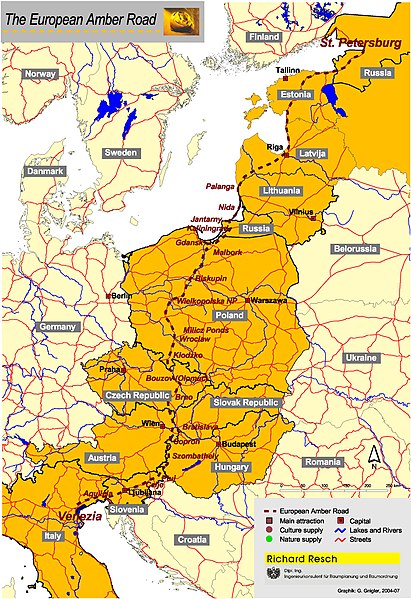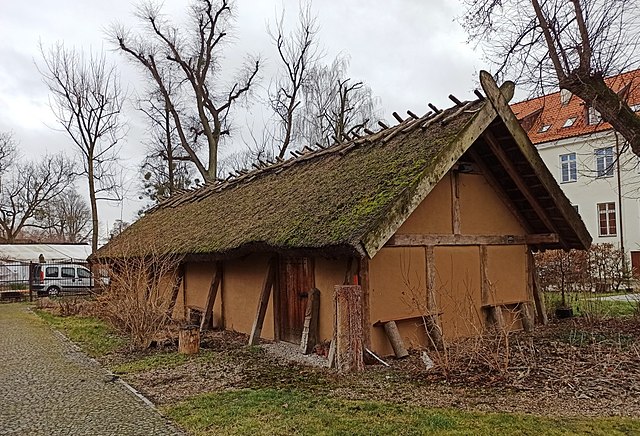Truso was a Viking Age port of trade (emporium) set up by the Scandinavians at the banks of the Nogat delta branch of the Vistula River, close to a bay, where it emptied into the shallow and brackish Vistula Lagoon. This sizeable lagoon is separated from the Gdańsk Bay by the Vistula Spit at the southern Baltic Sea coast. In the 9th century, the merchant Wulfstan of Hedeby travelled to Truso in the service of the English King Alfred the Great and wrote his account of the place at a prominent location of the Amber Road, which attracted merchants from central and southern Europe, who supplied the markets in the Mediterranean and the Middle East with the highly valued commodity.
The Amber Road (eastern route), as hypothesized by Polish historian Jerzy Wielowiejski, Główny szlak bursztynowy w czasach Cesarstwa Rzymskiego (Main Route of the Amber Road of the Roman Empire), 1980
Reconstruction of a Truso house in the Elbląg Museum of Archaeology and History
Drużno is a body of water historically considered a lake in northern Poland on the east side of the Vistula delta, near the city of Elbląg. As it is currently not deep enough to qualify as a lake hydrologically and receives some periodic inflow of sea water from the Vistula Lagoon along the Elbląg River, some suggest that it be termed an estuary reservoir. A village of recent origin also called Drużno is situated near the lake.
Drużno Lake



